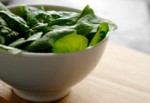Many women in New Zealand do not get enough iron in their diet. Read about why women’s health depends upon regular intake of iron rich foods.
What is iron?
Iron is a mineral which our body needs to maintain good health. It is essential for the following:
- To produce haemoglobin in the red blood cells, which carry oxygen around our body
- To release energy from the food we eat
- To maintain a healthy immune system
- For normal growth and development in children
How much iron do we need each day?
Different groups of people need differing amounts of daily iron:
- Pregnant women have the highest requirements of iron, as they have an increased blood supply in pregnancy and also have to supply the needs of the growing baby. In addition to this the baby in the womb has to lay down an iron supply to provide enough of this essential mineral, until they are eating an iron rich diet themselves.
- Women and girls who are having periods also have an increased iron need, due to the monthly blood loss that occurs in menstruation. Women in this age group actually need twice as much iron as the average man.
- Athletes also have greater iron needs.
- Infants, children and adolescents have a great need for iron, due to their rapid growth. The baby lays down adequate stores during pregnancy to last for the first 6 months of life – while breast milk provides full nutrition for the first 6 months, it does need to be supplemented with iron-rich weaning foods thereafter.
Consider that some women come into the category of menstruating, being athletic and having had a recent pregnancy! These factors all put huge demands upon the iron needs of the body.
Daily iron requirements (in mg of iron per day) for infants, children and adults:
| Infants 7-12 months | 11 |
| Children 1-13 years | 8-10 |
| Boys 14-18 years | 11 |
| Girls 14-18 years | 15 |
| Women 19-50 years | 18 |
| Pregnant women | 27 |
| Breastfeeding women | 9-10 |
| Women over 50 years | 8 |
| Men over 19 years | 8 |
How can we obtain sufficient iron from our diet?
It is estimated that 40-45% of women in New Zealand do not get enough iron from their diet.
There are two types of iron that can be obtained from our diet:-
Haem iron, which is absorbed more easily by the body (about 25% is used)
Non-haem iron which is more difficult to absorb (only about 5% is used)
- Red meat – the redder the meat, the higher the iron content
- Poultry and seafood, though in lesser amounts
Non-haem iron is found in:-
- Baked beans
- Marmite
- Cornflakes
- Spinach and other dark green vegetables
- Brown rice and wholemeal bread
The absorption of non-haem iron is increased by the presence of vitamin C and haem iron. The easiest way to obtain an iron rich diet is to take a variety of foods rich in haem and non-haem iron. Vegetarians need to make a special effort to ensure that they obtain sufficient iron for their daily needs.
How will I know if I am iron deficient?
Firstly consider whether or not you have any of these classic symptoms:-
- Tired and lethargic
- Irritable
- Catching frequent colds and infections
- Feeling the cold
- Feeling tired quickly when exercising
- Unable to concentrate for long.
Please note that these symptoms could also be due to other conditions or lifestyle factors – so check out with your doctor to find out whether or not you are iron deficient. Usually a simple blood test will confirm your iron status. Meanwhile there is certainly no harm in ensuring that you are taking an iron rich diet.
Nutritional tips for iron intake
Lean red meat is an excellent source of haem iron. If you are iron deficient a small portion of red meat most days will boost your iron level, although it does take a few weeks to improve your iron level once it has fallen below normal levels.
Non-haem iron will be absorbed a lot better in the presence of vitamin C. Therefore try to take citrus fruit and fruit juice with meals rich in non-haem iron, for example:-
- A glass of fruit juice at breakfast time, with cornflakes
- An orange or kiwi fruit at lunch time, after baked beans on wholemeal toast
- Fresh tomatoes with a green salad containing baby spinach leaves with dinner
Remember that vitamin C is destroyed by boiling temperatures.
Avoid tea and coffee as they further reduce the absorption of non haem iron.
Finally enjoy your food and take care of yourself
Useful articles
To read about Iron in Children’s diets, visit our article by our registered dietitian and nutritionist.








